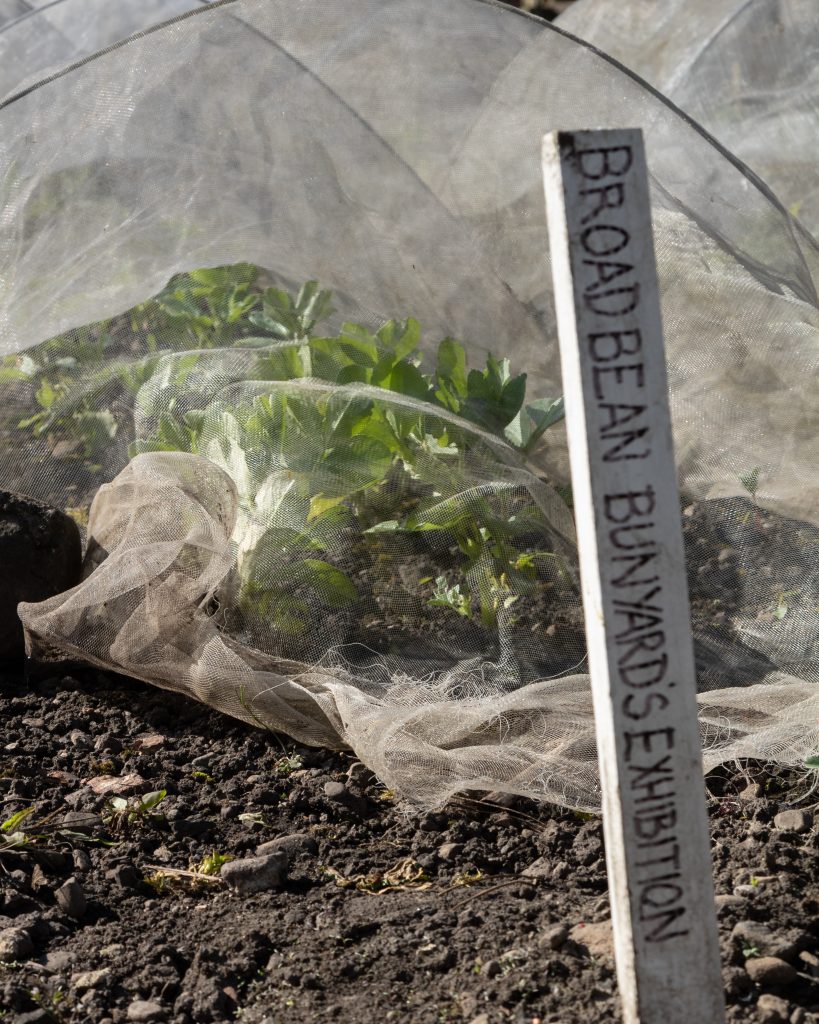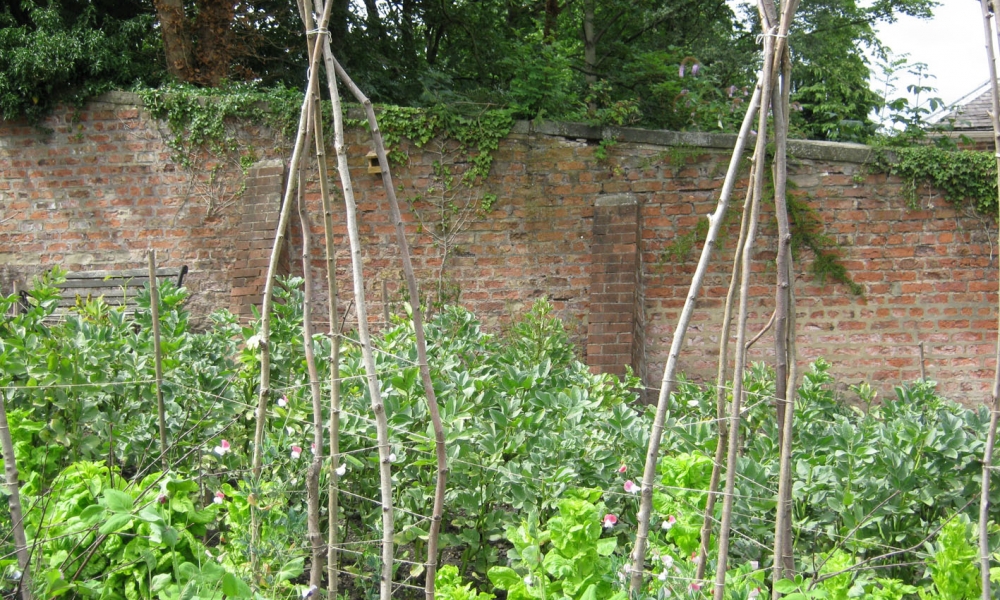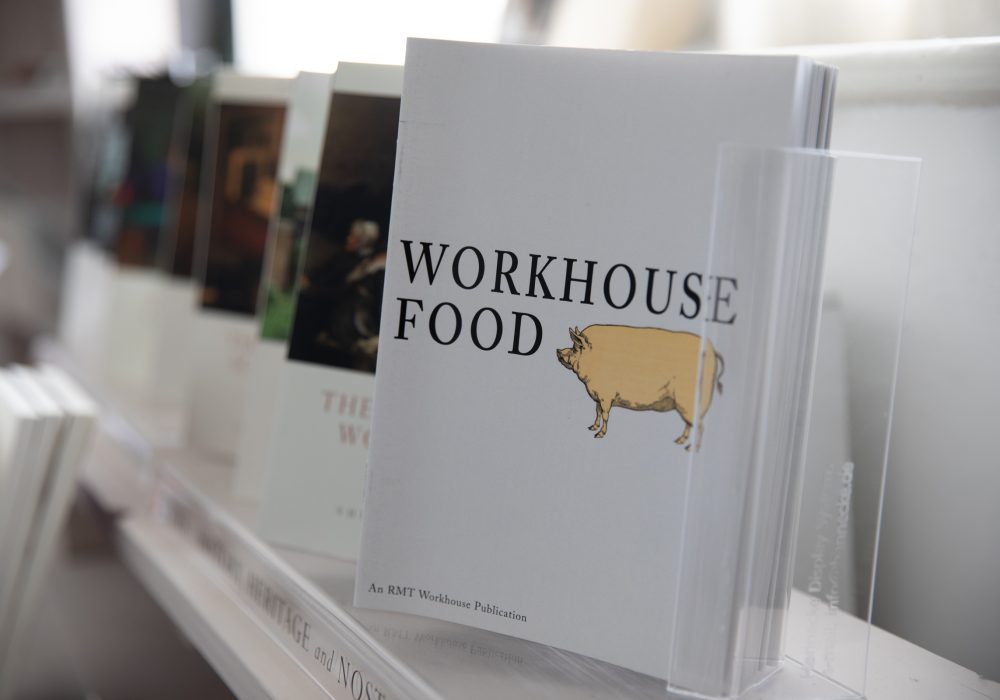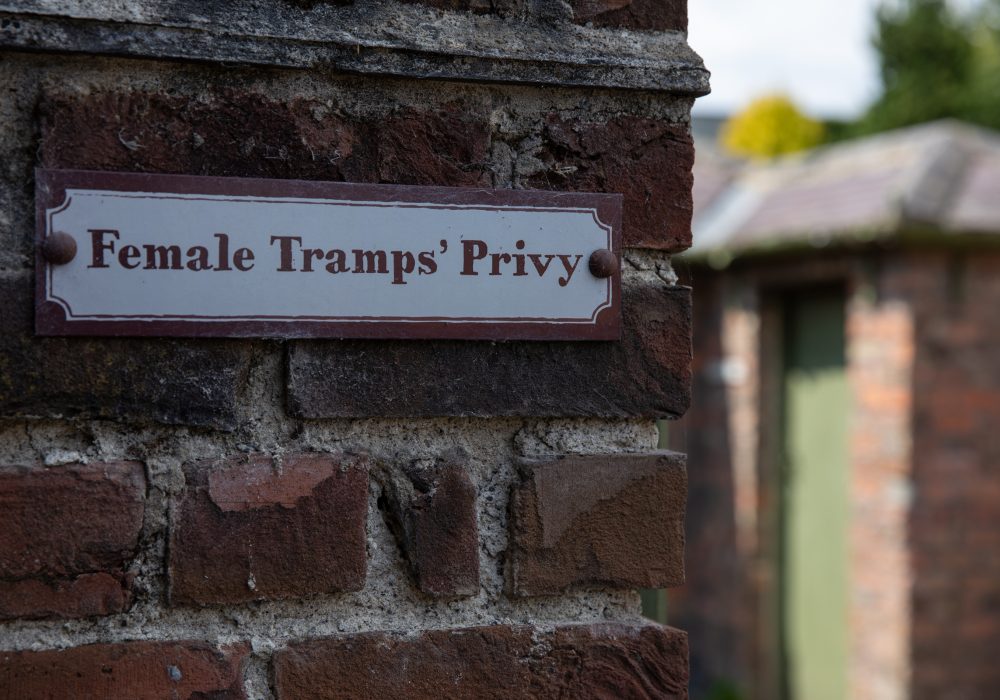

Life in the workhouse
The garden accounts for the workhouse reveal that pea rods were purchased every year from 1895 to 1899, for 2 shillings from a Mr Steel.
Today we grow our own bean poles. The hazel plants around the edge of the garden are coppiced each year and the cut branches are used to support climbing beans.
Root vegetables
Accounts from this garden in the 1880s show that carrots and turnips were grown here and fed to the workhouse inmates. They were added to broths and stews.
Varieties grown in 1890
- Carrots – Chantenay Red-cored, Mr James’ Scarlet Intermediate
- Turnips – Snowball, Golden Ball
- Swede – Champion Best of All, Green Top’d Yellow.
- Parsnip – Half Long Guernsey, Hollow Crown
- Beetroot – Egyptian turnip-rooted, Tonda di Chioggia
How to grow
Sow seed directly into a 1cm deep watered trench of fine soil; rake to cover seeds; thin seedlings when large enough to handle so the roots have room to grow. Successional sowing of small quantities every three weeks will give a longer harvesting period.
Potatoes
Dietary guidelines produced by the Poor Law Commission in 1835 show that potatoes were served regularly to workhouse inmates with meat.
They were a useful, cheap, energy source for the workhouse and were stored in the cellar.
Varieties grown in 1890
- First early (ready 100 days after planting) – Duke of York
- Second early (ready 110 days after planting) – British Queen
- Main crop potatoes (ready 125 days after planting) – Fellside Hero
How to grow
Before planting, sprout seed potatoes by keeping them in the light and cool (called chitting). When shoots are about 3cm long, plant them 20cm deep in the soil. Then build banks of soil around the base of the plants when the stems have emerged.
Cabbage
In 1856, Worcester Workhouse sought permission to substitute cabbage for potatoes in their inmates’ diets to use up their garden crop. In 1901, cabbages are listed in the ingredients for workhouse broths and stews.
Varieties grown in 1890
- Spring cabbage – Flower of Spring, Mr Wheeler’s Imperial
- Summer cabbage – Large Drumhead, Golden Acre
- Winter cabbage – Holland Late Winter, January King
- Red cabbage – Red Drumhead
- Kale – Hungry Gap, Nero di Toscano
- Cauliflower – Autumn Giant, Snowball
How to grow
Sow seedlings in a seed tray of damp compost covered with about 1cm of soil. When seedlings have their first true leaves, prick out and grown on in small pots until they have 5-6 true leaves, and the roots fill the pot. Plant out into the soil about 50cm apart and protect from pigeons and slugs.

